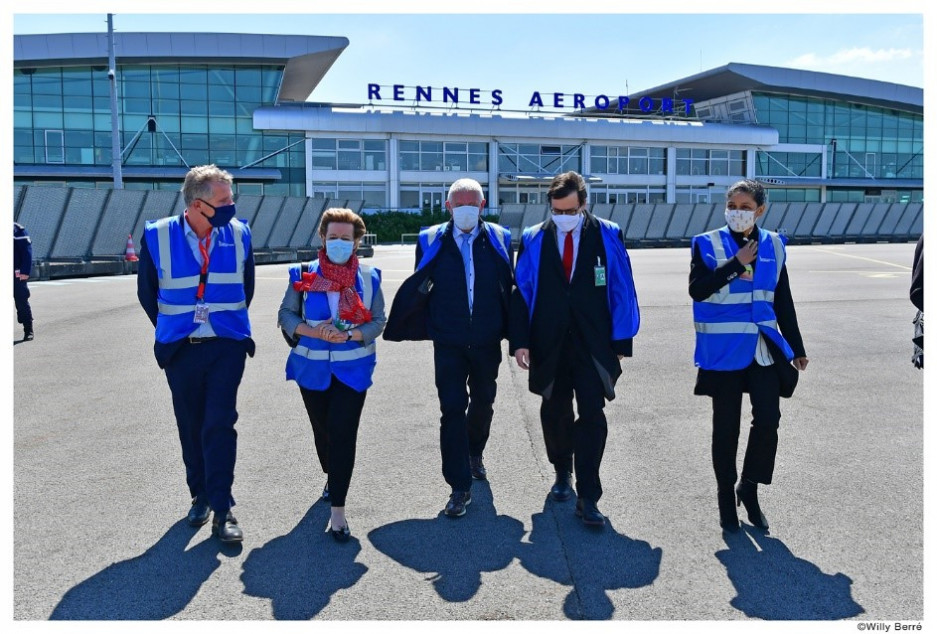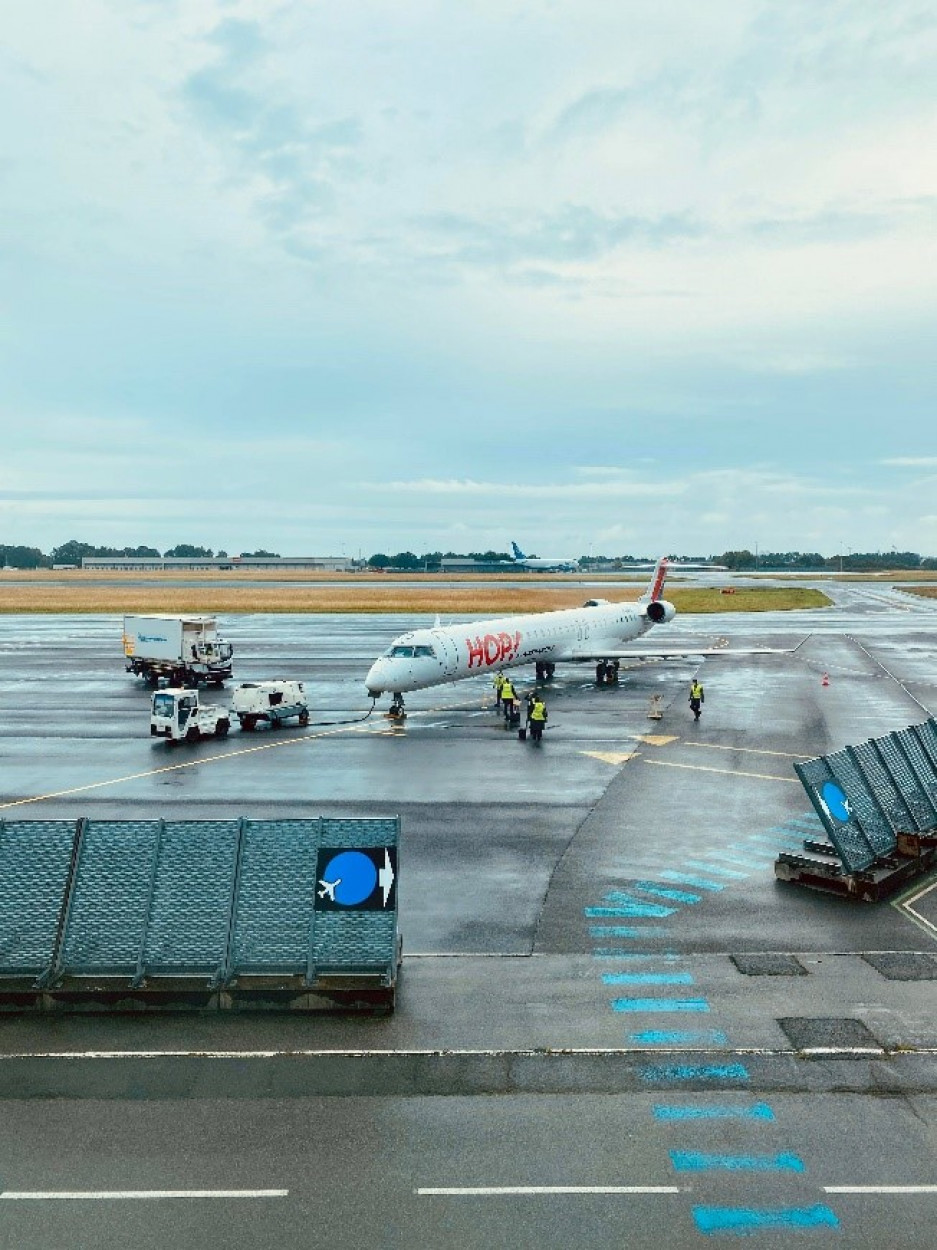
Positive Mobility
eMagLift-off at Rennes

After two months of lockdown, on the 11th May Rennes Bretagne Airport gradually began resuming activities, and tackling new challenges. We take a look at a site with a major role in driving the regional economy.
The group of five people, colleagues from a company in the Rennes area, head to the boarding gate. Their flight to Lyon leaves in half an hour. The familiar sounds of lively conversation, luggage wheeling over the floor, the final phone call before take-off, have a special significance now, after commercial flights from Rennes airport restarted the 15th of June, after lockdown. This familiar scene now takes on a new meaning.
The site, operated by VINCI Airports and the Ille et Vilaine Chamber of Commerce and Industry, can host 850,000 passengers a year and provide fifteen or so direct services to French and European destinations. Although the airport did not close during the three-month lockdown period, it was empty of passengers. "We carried out maintenance on our runways during the health crisis and the airport was used by a number of emergency medical flights, so the site wasn't completely out of action," explains Nathalie Ricard, Airport Director. "But, naturally, none of our commercial flights operated."
Traffic gradually started up again on 11th May, beginning with freight then, on 15th June, passenger flights to Lyon. Nathalie Ricard describes the context: "It wasn't the first time the airport was at a standstill - there was the 2010 Eyjafjallajökull volcanic eruption in Iceland for instance - but with Covid-19 the situation was very different: the borders were closed. Passengers weren't stranded on the ground, they were not allowed to move on the territory or to leave it. Our business came to a total halt! It was totally unprecedented."

Health and Safety first
This made the reopening to passengers a highly anticipated moment - but it also raised a host of questions. Would passengers be ready to come back? How would airlines react? How would the return to business-as-usual be organised? "Our main concern was very much ensuring everyone's health" says Nathalie Ricard. "So we put all the necessary protective measures in place, including making it compulsory for people to wear masks from when they enter the airport to when they leave, providing hand sanitiser, stepping up cleaning at contact points, and social distancing." The range of measures was backed up by a concerted communication effort, from posters and regular announcements to dedicated teams on hand to guide and assist passengers.
In terms of traffic, the return to normal happened gradually, step by step. "We started with domestic flights. Especially as the holiday season has seen renewed interest in visiting France, a trend that benefits us as a gateway to Brittany." Since beginning of July, Air France, easyJet and Volotea have resumed all their domestic flights and have opened new lines to destinations such as Biarritz and Corsica. European destinations such as Geneva or Amsterdam are also gradually taking over.
Boosting mobility services
However, nothing stands still in the air transport industry. Following the health crisis, a new factor emerged as part of efforts to change travel habits: cancelling domestic flights when a train journey of less than two and a half hours is available. The Rennes teams are unruffled by this potentiel evolution and view it constructively. "We see ourselves as a link in the mobility chain in Brittany. And in a chain, the links work together rather than against each other. The high-speed train is one of the links, but the service we provide meets other needs; for instance, by offering domestic or European cross-country connections or connections to distant destinations via European hubs, which are essential to the influence of the Rennes city. Intermodal transport is the solution of the future, not pointless opposition between different solutions."
When it comes to environmental responsibility, the airport has already made this a core concern, succeeding in reducing its carbon footprint year in year out. "It's a collective challenge, and we're playing our part."
Contributing to local development
The resumption of activities following Covid-19 is well and truly underway, though the situation remains uncertain, particularly for international flights, and requires a pragmatic approach. "The teams are very motivated and passengers are back, happy to be taking business trips again or visiting family and friends after two months of enforced separation. Our staff and travellers are nearly all locals. We want to continue to fully play our role in the region's development and economic buoyance," concludes Nathalie Ricard.
